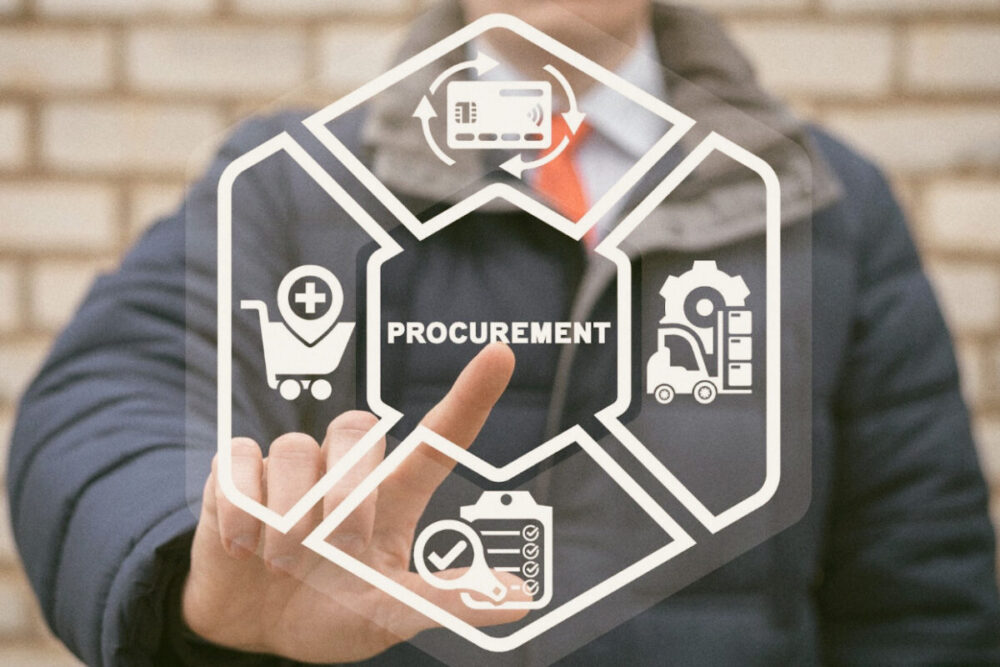
In today’s fast-paced business environment, the essence of having a supplier portal cannot be overemphasized. It stands as a bridge connecting companies and their suppliers, providing a centralized hub for all interactions. From invoice submissions to dispute resolutions, an efficient supplier portal streamlines processes and ensures smooth operations.
Beyond operational ease, such portals offer real-time insights into transactions. This dynamic view into transactions minimizes errors and hastens problem resolution. Thus, suppliers gain confidence in your business operations, knowing that their concerns and invoices will be promptly addressed.
Additionally, it’s not just about efficiency. The strategic value that a well-functioning portal brings is unparalleled. It facilitates data-driven decision-making, fosters supplier loyalty, and optimizes cash flow management – essential factors for sustainable growth.
Key Features to Include
When crafting an ideal supplier portal, it’s essential to consider the features that will most benefit both your organization and your suppliers. At its core, the portal should offer an intuitive user interface. Suppliers should be able to easily navigate, submit invoices, check payment statuses, and raise queries without hurdles.
Secondly, the portal must guarantee data security. With myriad transactions taking place, ensuring that sensitive financial and business information remains confidential is paramount. Implementing robust encryption methods and regular security audits can help in safeguarding data integrity.
Moreover, real-time notifications are indispensable. Suppliers appreciate being kept in the loop. Immediate alerts regarding payment statuses, document approvals, or any discrepancies can pave the way for transparent and trustful relationships.
Lastly, multi-language and currency support can be vital, especially for businesses with a global supplier base. This feature ensures that suppliers from different regions can interact with the portal seamlessly, enhancing user experience and fostering inclusivity.
Streamlining the Onboarding Process

One of the most critical phases in the supplier portal journey is onboarding. The ease with which suppliers can register and start using the portal can set the tone for future interactions. A seamless onboarding process, accompanied by clear guidelines, can reduce hesitations and foster quick adoption.
Training sessions, either virtual or face-to-face, can be instrumental. These sessions can familiarize suppliers with portal functionalities, address their concerns, and offer solutions to potential challenges. A well-informed supplier is more likely to engage proactively with the portal, ensuring smoother operations.
Moreover, dedicated support during the initial phase can be a game-changer. Whether it’s through helplines, chatbots, or email support, ensuring that suppliers have a go-to for their queries can make the transition smoother.
It’s also beneficial to gather feedback during the early stages. Understanding what suppliers like about the portal, and more importantly, what they don’t, can provide valuable insights. These insights can drive refinements, ensuring that the portal is continually evolving to meet users’ needs.
Ensuring Continuous Engagement
After the onboarding process, the challenge shifts to ensuring continuous engagement. The portal should not only be a platform for transactions but also a hub that suppliers frequent for insights, updates, and collaborations. Pushing regular content updates, industry news, or even training materials can keep suppliers engaged.
Regular surveys can be a useful tool in this endeavor. By understanding suppliers’ changing needs and preferences, businesses can tweak portal functionalities to ensure it remains relevant. A portal that evolves based on user feedback is more likely to see sustained engagement.
Furthermore, promoting a community feel can work wonders. Facilitating forums where suppliers can discuss, share best practices, or even collaborate on projects can enhance portal value. Such collaborative environments can foster stronger relationships and open doors for new business opportunities.
In the age of digital transformation, tools that offer real-time analytics and insights can keep suppliers engaged. Platforms such as Centime, with its centralized approach to AP and AR automation, can provide suppliers with a bird’s-eye view of their transactions, fostering trust and transparency.
Benefits of a Cloud-Based Supplier Portal

With the world moving to cloud solutions, supplier portals are no exception. Cloud-based portals offer advantages that traditional systems can’t match. Firstly, the scalability that cloud solutions provide is unmatched. Whether you’re dealing with a hundred suppliers or a thousand, cloud platforms can handle the load without hitches.
Moreover, cloud solutions ensure that the latest features and security protocols are always in play. Regular updates mean that businesses don’t have to worry about obsolescence. The portal remains in its prime form, offering the latest functionalities without the need for manual interventions.
Accessibility is another significant advantage. Suppliers can access cloud-based portals from anywhere, anytime. Whether they’re at their office desk or on the move, all they need is an internet connection to tap into the portal. This flexibility can significantly enhance user satisfaction and portal usage rates.
Lastly, cost-effectiveness is a notable benefit. Traditional systems come with hefty setup costs and regular maintenance fees. Cloud solutions, with their subscription-based models, can be more economically viable, especially for small to medium enterprises.
Leveraging Analytics for Insights
In the realm of AP excellence, decisions driven by data outperform intuition-based choices. A supplier portal embedded with analytics tools can provide businesses with actionable insights, paving the way for optimized operations and strategic moves.
For instance, tracking invoice processing times can shed light on bottlenecks. If a particular step in the process consistently delays invoice approvals, businesses can focus on refining that step. Such micro-level insights can significantly enhance overall operational efficiency.
Similarly, analytics can provide a macro view of supplier interactions. Understanding which suppliers regularly deliver on time, which ones offer the best quality, or even which ones raise the most disputes can guide vendor relationship strategies. Rewarding top performers or addressing consistent underperformers becomes easier with data-backed insights.
In the modern business landscape, it’s not just about gathering data but about deriving value from it. Integrating advanced analytical tools, leveraging machine learning, or even predictive analytics can transform raw data into strategic assets.
Importance of Regular Upgrades and Maintenance

Keeping your supplier portal updated is not just about introducing new features; it’s about ensuring that your system remains secure, efficient, and relevant. As the business landscape evolves, so do the needs of your suppliers. Regularly updating the portal ensures that it caters to these changing demands, fostering continuous engagement.
Furthermore, with cyber threats becoming increasingly sophisticated, ensuring your portal’s security mechanisms are updated is paramount. Regular maintenance checks can identify potential vulnerabilities and rectify them before they can be exploited, safeguarding sensitive financial and business information.
It’s also essential to remember that technology, by nature, is continually advancing. New tools and integrations emerge, which can further optimize your portal’s efficiency. By staying on top of these advancements and incorporating them, businesses can ensure that their supplier portal remains a benchmark in the industry.
Lastly, regular upgrades and maintenance signify commitment. It shows suppliers that the business is invested in ensuring the portal’s optimum functionality, fostering trust and signaling that the company values its vendor relationships.
Facilitating Open Communication Channels
A supplier portal should not just be a transactional platform; it should facilitate open communication between businesses and their suppliers. Ensuring multiple communication channels within the portal can foster transparency, a crucial ingredient for robust vendor relationships.
For instance, embedding a chat function can allow suppliers to raise queries immediately. Such real-time interactions can expedite problem resolutions, ensuring that operations remain smooth. Additionally, having a dedicated section for feedback can provide businesses with invaluable insights into supplier sentiments, guiding future portal enhancements.
Furthermore, periodic virtual meetings or webinars can be scheduled via the portal. These sessions can focus on a range of topics, from introducing new portal features to discussing industry trends. Such interactions not only keep suppliers informed but also foster a sense of community.
In essence, open communication channels transform the portal from a mere transactional hub to a collaborative platform. It becomes a space where ideas are exchanged, concerns are addressed, and relationships are nurtured, laying the foundation for long-term vendor partnerships.
The Role of Training and Support

Often, the success of a supplier portal hinges on how well suppliers can use it. Comprehensive training sessions, tutorials, and support can play a pivotal role in ensuring that suppliers leverage the portal’s full potential.
Initial training sessions, whether virtual or on-site, can familiarize suppliers with the portal’s functionalities. It’s essential to cover both basic and advanced features, ensuring suppliers are equipped to handle a range of tasks. Regularly updating training materials to reflect portal upgrades can ensure that suppliers are always in the loop.
Beyond initial training, ongoing support is vital. Suppliers should have easy access to help when they face challenges. A dedicated support team, complemented by chatbots or FAQ sections, can ensure that suppliers’ queries are promptly addressed.
Lastly, it’s essential to keep in mind that suppliers vary in their technological prowess. Tailoring training sessions to cater to different tech-savviness levels can ensure that all suppliers, whether digital natives or not, can navigate the portal with ease.
Harnessing the Power of Integration
In the age of digital transformation, integration is key. A supplier portal that can seamlessly integrate with other business systems, like ERP or CRM, can significantly enhance its efficiency. Such integrations ensure that data flows smoothly across platforms, minimizing manual interventions and the associated risks of errors.
For instance, integrating the portal with a sophisticated cash flow forecasting tool, can provide businesses and suppliers with real-time insights into transactions, fostering trust and transparency. Such integrations don’t just optimize operations; they offer strategic advantages, enabling data-driven decision-making.
Moreover, as businesses embrace a range of digital tools, ensuring that the supplier portal can integrate with these tools is vital. Whether it’s advanced analytics platforms, communication tools, or inventory management systems, seamless integrations can elevate the portal’s utility, making it a centralized hub for all vendor interactions.
In conclusion, as businesses strive to optimize their AP operations, the role of a robust supplier portal becomes pivotal. By focusing on user experience, fostering open communication, ensuring regular updates, and harnessing the power of integration, companies can ensure that their portal remains a beacon of AP excellence.








